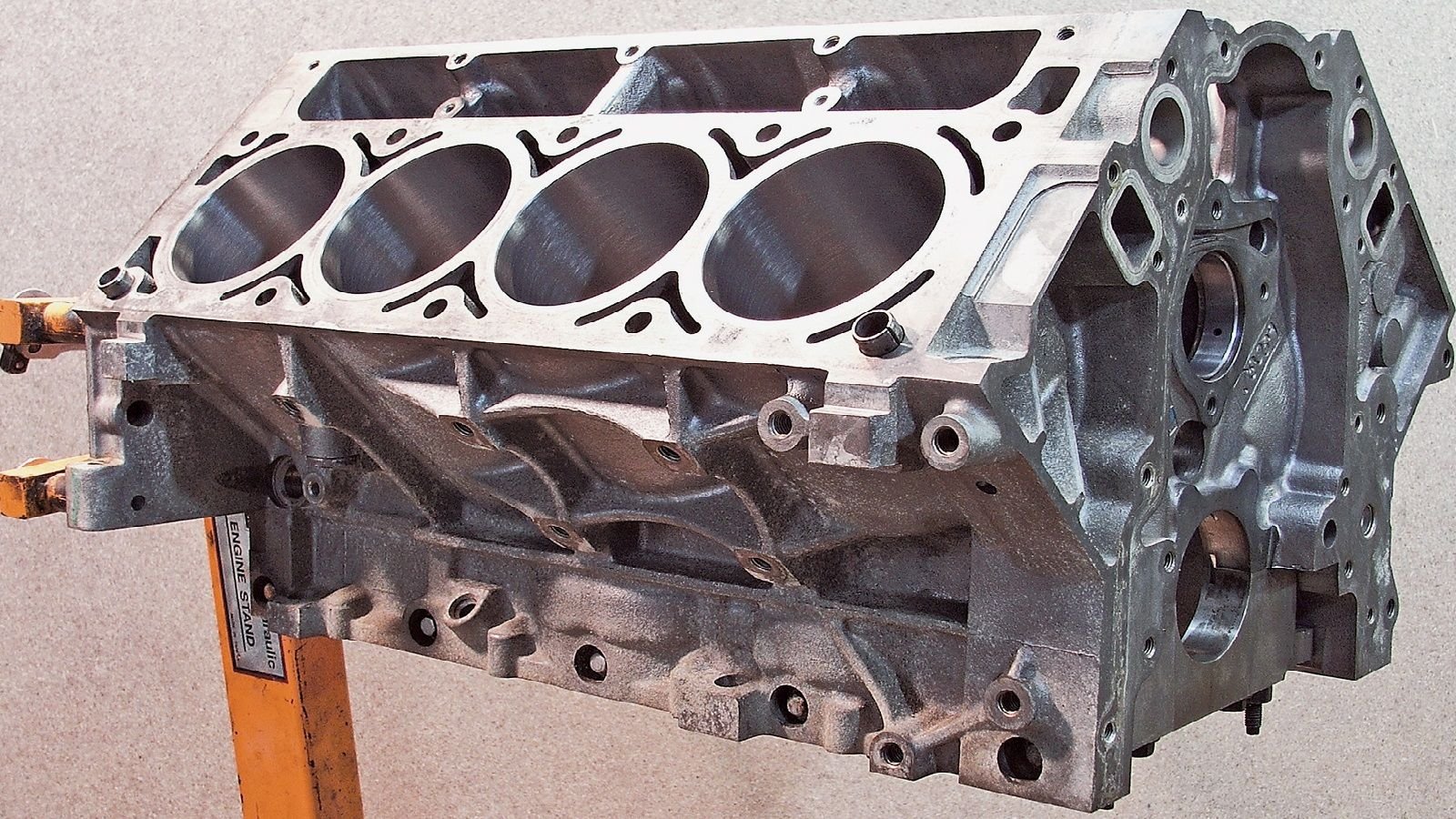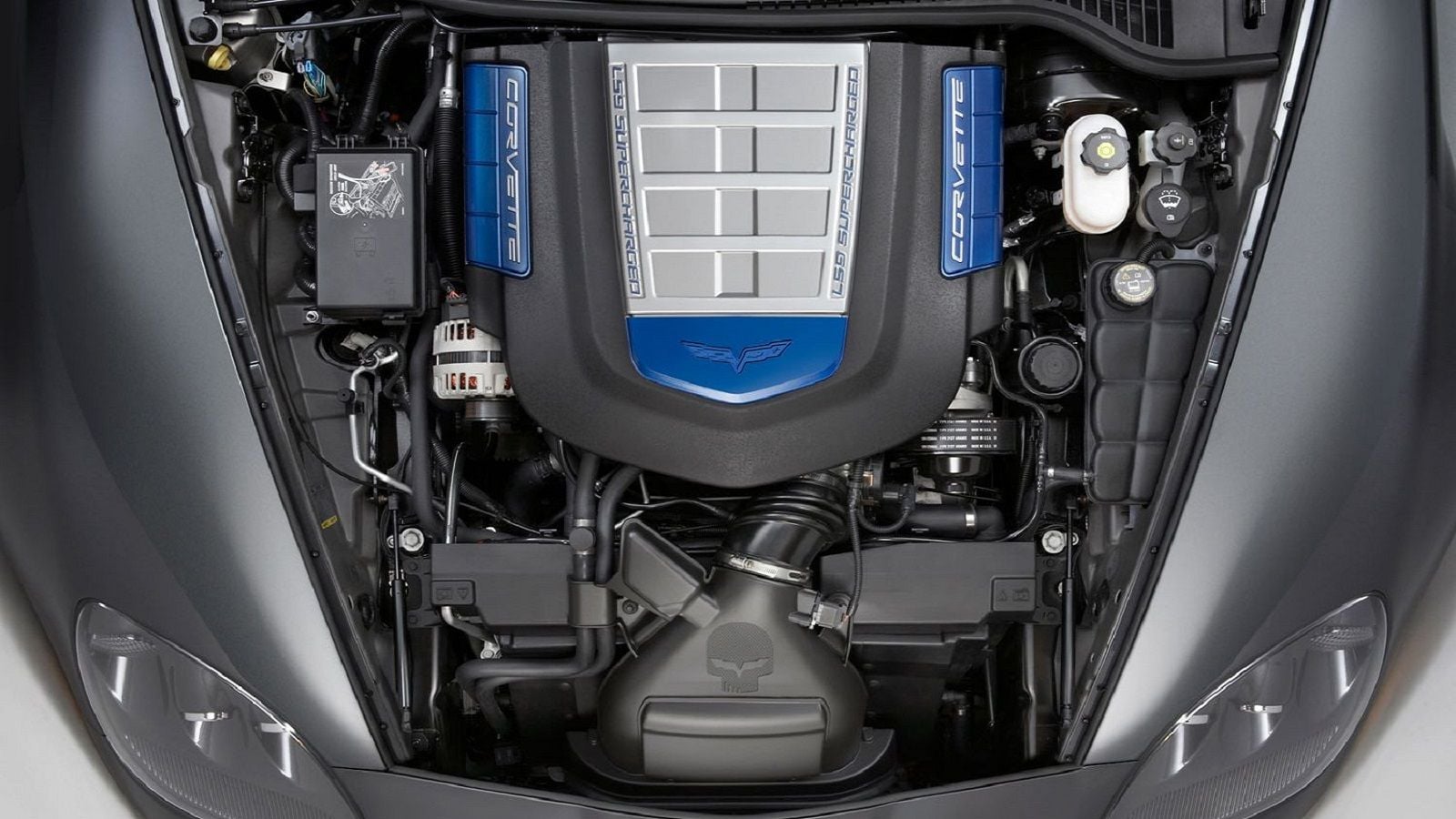Celebrating Twenty Years of LS Goodness
It is hard to believe that the LS1 engine was introduced over 20 years ago, but with such a strong following and performance to match, the LS may go down as one of the best engines of all time.




















An Inevitable Change
By the early 1990's, GM was well aware that their Gen I/II small block V8's were living on borrowed time as fuel and emissions standards set forth by the EPA were set to tighten towards the end of the decade. With other manufacturers moving towards overhead-cam engine designs, GM execs found themselves at a crossroad of which type of engine they would develop to take them into the new millennium.
>>Join the conversation about the Two Decades of LS Engines Providing Power right here on LS1Tech.
A Fork In The Road
The story behind the initial decision to move forward with an overhead-valve engine design apparently involved several blind tests of Corvettes fitted with different engine configurations. At GM's Milford Proving Grounds, test teams drove the cars back to back, and while they liked the car fitted with the DOHC LT5 ZR1 engine and its peak power at high revs, they ultimately agreed that the cam-in-block design was more responsive and produced better low-end torque.
>>Join the conversation about the Two Decades of LS Engines Providing Power right here on LS1Tech.
A Fresh Start
By starting from scratch on a new engine design, there were multiple areas of the outgoing small block that GM engineers wanted to improve upon. For strength, a deep-skirted block with reinforced main-caps would provide the foundation for horsepower. Altered valve angles and increased port sizing were also at the design forefront as these features would be developed specifically for port fuel-injection optimization. Both the crankshaft and camshaft were enlarged, a distributor-less ignition was designed, and an aluminum block would save a significant amount of weight.
>>Join the conversation about the Two Decades of LS Engines Providing Power right here on LS1Tech.
1997 - LS1
The third generation small block Chevrolet engine, coined the LS1, made its debut as the featured powerplant of the all-new C5 Corvette for the 1997 model year. The Gen III small-block V8 saw a significant jump in power output over the outgoing Gen II LT1 as the LS1 produced a healthy 345 horsepower and 365 pound-feet of torque out of a 5.7L displacement. Perhaps the most noticeable difference with the LS design was that it continued to make horsepower high in the rev range without running out of steam like the traditional small block.
>>Join the conversation about the Two Decades of LS Engines Providing Power right here on LS1Tech.
2001 - LS6
The LS1 was introduced into the Camaro platform in 1998 and remained as the featured engine until production ceased in 2002. The fifth generation Corvette also continued using the LS1 engine; however, a new high-output version designated as the LS6 was introduced in the 2001 performance Z06 Corvette. The LS6 blueprint was similar to that of the LS1 but saw improvements in the cylinder heads, intake manifold, camshaft, and block reinforcements to make for a higher revving engine with an output of 405 horsepower and 400 pound-feet of torque. The LS6 would be used in the Z06 Corvette from 2001-2004, but also saw a brief stint in the 2004 & 2005 Cadillac CTS-V.
>>Join the conversation about the Two Decades of LS Engines Providing Power right here on LS1Tech.
2005 - LS2
The next evolution of the LS engine debuted in 2005 and was again featured in the newest generation C6 Corvette. Considered the fourth generation (Gen IV) small block, the LS2 featured a new block casting the was capable of accepting enlarged 4.00" cylinder bores for a displacement of 6.0L. Generally speaking, the LS2 used the same high-flow heads from the LS6 with slightly smaller combustion chambers for an improved compression ratio. The end result was 400 horsepower and 400 pound-feet of torque, albeit through a much more usable powerband compared to the LS6. The LS2 was used in the 2005-2007 Corvette as well as the 2005 & 2006 Pontiac GTO.
>>Join the conversation about the Two Decades of LS Engines Providing Power right here on LS1Tech.
2006 - LS7
GM dropped the hammer on its competition in 2006 with the introduction of the fire-breathing LS7 in the C6 Z06 Corvette. Using technology derived directly from the Corvette Racing Program's C5R, the hand-built LS7s used pressed-in siamesed cylinder liners to accommodate a larger bore and stroke, a dry-sump lubrication system, forged steel main bearing caps, titanium connecting rods and intake valves, and hypereutectic pistons that could withstand higher combustion temperatures while also decreasing blow-by. These 7.0 liters of goodness could rev to the moon (7,100 rpm) and produced 505 horsepower/470 pound-feet of torque.
>>Join the conversation about the Two Decades of LS Engines Providing Power right here on LS1Tech.
2008 - LS3
The LS3 made its debut in the 2008 Corvette and was essentially an upgraded iteration of the LS2. GM did not simply up the bore from 6.0L to 6.2L but also used larger rectangle port cylinder heads similar to those found on the LS7 to support the increased displacement. The engine also received hand-me-down LS7 fuel injectors, a freer-flowing intake manifold, new offset rocker arms, and a new camshaft profile. Although the rev limit was slightly reduced compared to the LS2, the LS3 produced an additional 30 horsepower and improved low-end grunt. The L99 found in the 2009 Camaro was a variant of the LS3 but utilized variable valve timing and a cylinder deactivation system for improved fuel economy and reduced emissions.
>>Join the conversation about the Two Decades of LS Engines Providing Power right here on LS1Tech.
2009 - LS9
The LS9 was the ultimate expression of a production LS engine and in many ways capped off the LS production run with a bang. The LS9 featured a unique block based on the 6.2L LS3 block but used a special alloy to help cope with the increased cylinder pressures of forced-induction. Loads of trick bits were used throughout this engine such as the forged titanium connecting rods, rotocast cylinder heads (reduced porosity resulting in a denser & stronger material), piston oil-squirters, and an intercooled 2.3L Eaton supercharger system to name a few. The engine was good for 638 horsepower and was capable of propelling the 2009-2013 Corvette ZR1 to over 200 MPH. The revered LSA engine found in the 2009-2014 Cadillac CTS-V was essentially an LS9 with cast aluminum pistons and a smaller 1.9L supercharger.
>>Join the conversation about the Two Decades of LS Engines Providing Power right here on LS1Tech.
A Bright Future
Although GM may have moved onto greener pastures with their new LT engines, they still sell and support the LS and LSX crate engine platforms. Similarly, these engines have become a staple for the hot-rod community as well as various racing series around the globe. With great reliability, huge aftermarket support, and the ability to produce whopping power numbers, it is safe to say that the LS engines are here to stay.
>>Join the conversation about the Two Decades of LS Engines Providing Power right here on LS1Tech.
For help with your maintenance and repair projects, please visit our how-to section in the forum.
